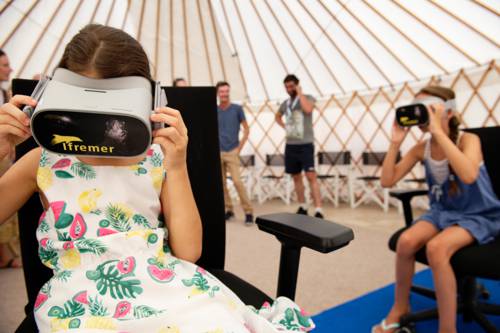
FAQ About The Cultural Influence of 3D Animation Across Industries

What industries have been significantly affected by 3D animation?
3D animation has significantly impacted various industries beyond traditional film, including gaming, education, virtual reality, architecture, and healthcare. Each industry leverages the capabilities of 3D animation for visualization, simulation, and interactive experiences that enhance their existing systems and engage users in innovative ways.

How has 3D animation changed the gaming industry?
3D animation has revolutionized the gaming industry by allowing for more lifelike graphics and immersive experiences. It enables developers to create detailed characters, environments, and storylines that engage players with higher realism and interactivity. This enhancement in fidelity and depth has broadened the audience for games and has transformed gaming into a major entertainment medium.

In what ways is 3D animation used in education?
In education, 3D animation is used to create engaging and interactive learning materials. It can help visualize complex scientific concepts, historical events, or mathematical models in a more understandable way. For example, 3D models of the solar system or interactive cell structures can enhance student understanding and retention, making abstract concepts tangible and accessible.

Can you provide examples of 3D animation in virtual reality applications?
3D animation is pivotal in virtual reality (VR) environments, creating immersive worlds for various applications such as VR gaming, training simulations, and therapeutic environments. Examples include VR tours of historic sites, realistic training scenarios for military or medical personnel, and therapeutic simulations for mental health treatment, which leverage 3D animation to replicate real-world environments effectively.

How does 3D animation contribute to the field of architecture?
In architecture, 3D animation is used to create detailed visualizations of architectural designs and projects. Architects employ 3D animated walkthroughs and renderings to showcase the design's aesthetic and functional aspects, providing clients and stakeholders with a realistic view of the finished project before construction begins. This not only aids in decision-making but also in communicating ideas effectively.

What role does 3D animation play in healthcare?
3D animation in healthcare is used for creating precise and detailed models of human anatomy, medical procedures, and drug effects. These animations serve as educational tools for professionals and patients alike, improving understanding of complex medical concepts and technologies. They are also instrumental in surgical planning and simulation, providing a virtual environment for practice and assessment.

Why is 3D animation important for cultural representation in media?
3D animation enhances cultural representation by providing a platform for diverse stories and characters to be brought to life with creativity and detail. It enables filmmakers and content creators to explore cultural narratives beyond the limitations of live-action, allowing for a broader depiction of traditions, histories, and social issues. This can lead to increased representation and understanding of different cultures within global media.

Are there any notable cultural impacts of 3D animation on societies?
Yes, 3D animation has influenced societies culturally by shaping how narratives and characters are perceived globally. Iconic 3D animated films have introduced audiences to diverse cultures and moral stories, promoting intercultural understanding and empathy. Furthermore, the collaborative nature of 3D animation projects can lead to cross-cultural exchanges among creators and tech developers worldwide.

How has 3D animation influenced art and artists?
3D animation has opened up new avenues for artists to express their creativity. Artists can explore intricate designs and complex narratives that would be difficult or impossible with traditional media. This has also led to a new digital art movement, where artists utilize animation software to create virtual art installations, VR experiences, and interactive artworks that engage audiences in unique ways. The accessibility of animation tools has also democratized art creation, allowing more voices to be heard.

What are some misconceptions about 3D animation's role in non-entertainment industries?
A common misconception is that 3D animation is only for entertainment, such as films and video games. In reality, its applications span many sectors including education, medicine, architecture, and business. It is a versatile tool used for scientific visualization, data simulation, and product prototyping, proving instrumental in enhancing communication and understanding across various fields.

How does 3D animation enhance marketing strategies?
3D animation enhances marketing strategies by creating engaging and visually appealing content that captures audience attention. It allows marketers to present products and services in a dynamic way, providing detailed insights that static images cannot. This can include animated explainer videos, product demonstrations, and virtual showrooms. Such strategies often lead to increased consumer interaction and higher conversion rates.

What technological advancements have propelled the growth of 3D animation across industries?
Several technological advancements have contributed to the growth of 3D animation across industries, including increases in computational power, the development of sophisticated software like Autodesk Maya and Blender, and improvements in rendering techniques that produce realistic images swiftly. Additionally, advancements in virtual and augmented reality technologies have expanded the applications of 3D animation beyond traditional uses.

What is the future outlook for 3D animation in various industries?
The future of 3D animation appears promising as it continues to evolve with technology. We can expect further integration into industries such as healthcare, education, and retail, where immersive experiences enhance efficiency and engagement. Moreover, the rise of AI and machine learning may lead to even more advanced animation techniques, increasing personalization and interactivity in various applications.

Is the use of 3D animation cost-effective for small businesses?
While traditionally associated with high costs, the use of 3D animation has become increasingly accessible and cost-effective for small businesses due to advancements in affordable software and tools. Online platforms and free resources such as open-source software have democratized access, allowing small businesses to incorporate 3D animation into their marketing and product development strategies without significant financial investment.

How is 3D animation influencing storytelling?
3D animation has transformed storytelling by offering creators tools to visualize stories in multidimensional ways. It allows for detailed world-building, dynamic characters, and imaginative plots that can capture the audience's imagination more effectively than traditional methods. This capability extends the potential for creative expression in films, games, and virtual experiences.

What is the role of 3D animation in immersive learning environments?
3D animation plays a crucial role in immersive learning by creating engaging environments where learners can interact with educational content dynamically. Whether it's for virtual lab simulations, historical recreations, or interactive language learning, 3D animation enables experiential learning that can improve understanding and retention by offering real-world context and visual engagement.

Can 3D animation help in visualizing scientific data?
Yes, 3D animation is an invaluable tool for visualizing scientific data, offering dynamic visualizations that make complex data more accessible and understandable. It can illustrate everything from molecular structures in biology to the simulation of climate change models, aiding scientists and researchers in analyzing intricate data patterns and conveying findings to both the scientific community and the public effectively.

What impact has 3D animation had on the film and television industry?
3D animation has had a profound impact on the film and television industry by providing tools for creating visually stunning narratives and fantastical worlds that are impossible with live-action alone. It has expanded creative possibilities and storytelling by allowing for greater visual expression, intricate special effects, and detailed cinematic landscapes, greatly enhancing the artistic quality and viewer engagement in films and TV shows.

How has consumer accessibility to 3D animation tools changed over recent years?
Consumer accessibility to 3D animation tools has dramatically improved in recent years, with the advent of user-friendly software and free platforms such as Blender, which provide powerful yet accessible features for novices and professionals alike. This democratization of technology has opened up animation to a broader audience, encouraging more independent creators and small businesses to explore and utilize 3D animation in various projects.

How does 3D animation intersect with augmented reality (AR) technologies?
3D animation intersects with augmented reality (AR) technologies by helping create realistic and interactive overlays that augment users' perceptions of the real world. In various applications, from educational apps to retail and entertainment, 3D animations bring static objects to life, providing enhanced user experiences and interactive content that can be viewed through AR devices like smartphones and AR glasses.
